Welcome to our comprehensive blog on the benefits and applications of premium organic 10-10-10 fertilizer for lawns and gardens. This blog aims to provide readers with a detailed understanding of how this balanced nutrient formula can enhance plant growth, enrich soil health, and lead to vibrant, lush green spaces. Whether you are a gardening enthusiast, a professional landscaper, or someone looking to maintain a healthy lawn, this guide will offer valuable insights, tips, and best practices for utilizing 10-10-10 fertilizer effectively. Join us as we explore the world of organic gardening and discover the advantages of integrating this versatile fertilizer into your gardening routine.
What is 10-10-10 Fertilizer and How Does it Work?
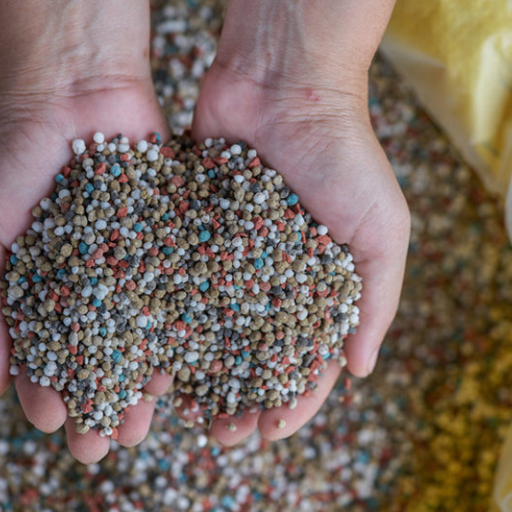
Understanding NPK ratios in 10-10-10 Fertilizer
The number “10-10-10” in the 10-10-10 fertilizer shows the NPK ratio that is nitrogen (N), phosphorus (P) and potassium (K). These are major nutrients for plants. Each figure of the ratio represents a percentage, by weight, of the respective nutrient in a bag of fertilizer. Accordingly, 10-10-10 fertilizers will contain approximately 10% nitrogen, 10% phosphorous and 20% potassium. This well-balanced formula ensures that all-important nutrients are present in equal amounts to promote healthy plants, robust root establishment as well as prolific flowering and fruiting. The 1:1:1 proportion enables evenness hence vitality of the garden resulting from healthy roots development and abundant blossoming.
Benefits of Using 5-5-5 Fertilizer in Gardening
Many benefits come with using this fertilizer during gardening which is meant to boost crop health and growth. First, a balanced ratio between NPK guarantees an equal amount of these macronutrients for various plant functions. Nitrogen is necessary for lush green foliage while phosphorus is important for root development and formation of flowers and fruits. Lastly, Potassium helps overall plant vigor as well as resistance to diseases.
Also, such a type of fertilizer can be used on different plants including vegetables such as cabbages; flowers like roses; shrubs as well as trees among others. Therefore it’s convenient for farmers planting different varieties within their gardens or farms so that no one discriminates against anyone else due to soil fertility or any other reasons relating to plants’ types.
Another advantage with this product is how easy it is applied since you can use it through either diluting with water or by spreading granules every time you are feeding your crops directly. Its flexibility therefore means that it can work within many types of garden scenarios and preferences so that even first timers in gardening can have success.
Comparing 10-10-10 Fertilizer With Other Formulations Like 5-10-10
There are different proportions of nutrients and their intended application to consider when comparing such fertilizer with other formulations including 5-10-10. In terms of nutrient delivery, the 10:10:10 formulation provides a balanced supply of nitrogen, phosphorus as well as potassium making it applicable for general purposes across most plants. This even spread promotes healthy plants by causing green foliage, strong root growth and more flowers.
On the other hand, there is less nitrogen but more phosphorus and potassium in a bag of 5-10-10 fertilizer making it ideal for crops like tuber vegetables and flowering plants which require good root systems and many blossoms. Therefore, the reduced amount of nitrogen will minimize excessive leafy growth allowing more energy to be channeled towards root and flower development.
In conclusion, while 5-5-5 is suitable for specific conditions where rooting ability as well as flowering is desired at best; 3:1:2 ratio serves as one choice that meets all basic gardening needs. Therefore farmers should take into account what their plant or soil requirements are such that they go for either this or the latter kind depending on these specifications.
How to Use Organic 10-10-10 Fertilizer in Your Lawn and Vegetable Garden
Proper Application Techniques for Lawns
To properly apply organic 10-10-10 fertilizer to your lawn, start by determining the correct amount needed based on the size of your lawn. Check the fertilizer packaging for the recommended application rate, typically expressed in pounds per square foot.
Mow your lawn and be sure to pick up any grass clippings or debris because it helps make contact between soil and fertilizer more effective. It’s best if you choose a time when the blades are dry since this prevents sticking.
Use a broadcast spreader to achieve even distribution, setting the spreader to the appropriate setting as recommended by the manufacturer. Walk evenly across the lawn, overlapping your passes slightly to ensure complete coverage without missing any spots.
Fill in holes with water immediately after spreading in order to dissolve manure fertilizers into dirt and hence make nutrients reach down well in soil. Regular watering enables nutrients to go deep and promotes healthy root development. Alternatively, schedule an application before rain or manually irrigate.
For optimal results, apply the 10-10-10 fertilizer two to three times a year during growing season; this can be done in early spring, mid-summer, and early fall. Always follow specific instructions provided on fertilizer packages while adjusting for local climate conditions and soil types.
Regularly monitor your lawns health so that you may adjust whenever necessary on schedules’ amounts of fertilization it requires for that green growth look.
Using 10-10-10 Fertilizer for Vegetable Gardens
Using 10-10-10 fertilizer will largely boost plant growth as well as yields in vegetable gardens. The first step is testing the soil so you know how much of each nutrient needs to be applied. In general 1 – 2 pounds of fertilizers should be used over an area of garden bed measuring approximately one hundred square feet.With regards preparing flower beds remember they must be weed free and the ground well aerated. Apply the fertilizer evenly over the soil surface, and then work it into the top 6 inches of soil with a hoe or garden fork.
The best time to apply 10-10-10 fertilizer in vegetable gardens is two weeks prior to planting and at intervals recommended for the specific crop. Heavy feeders such as tomatoes, peppers, and corn may need more frequent exchanges. Moreover, consider adding organic matter like compost to improve the structure and microbial activity of your soil. After fertilizing always water thoroughly to help dissolve nutrients into the plant roots. Therefore continuous monitoring and performance based adjustments coupled with soil tests will enable you maintain a healthy and productive vegetable garden.
Tips for Fertilizing Shrubs and Flowerbed Roses with 10-10-10
To ensure your shrubs and flowerbed roses thrive, follow these tips when using 10-10-10 fertilizer:
- Timing: The best time to apply 10-10-10 fertilizer to shrubs and roses is in early spring as new growth begins. A second application can be made in mid-summer for continuous nourishment.
- Application Rate: Apply the 10-10-10 fertilizer at a rate of 1 pound per 100 square feet. For individual shrubs and roses, use about 1 cup of fertilizer per plant. Be sure to distribute it evenly around the base of the plants.
- Method: Sprinkle the fertilizer evenly around the drip line of each shrub or rose bush, where the outer roots can absorb the nutrients. Avoid direct contact with stems which cause burning due to excess carbon that destroys sensitive young plants.
- Incorporation: Use a rake or hand cultivator to slightly mix the fertilizer into the soil top layer. This will ensure that nutrients go to root level where they are most needed.
- Watering: Water the area well after applying fertilizer. The purpose of this is to help in dissolving granules of fertilizers as well as facilitate plants’ roots uptake of nutrient.
- Frequency: For optimum growth, check your shrubs and roses for their health and appearance occasionally. Fertilization may be altered accordingly; it usually occurs once every six or eight weeks during growing season.
Observe these rules if you want healthy development and a rich flowering in your trees, bushes, roses planted in flowerbeds.
What are the Nutrient Components of 10-10-10 Fertilizer?
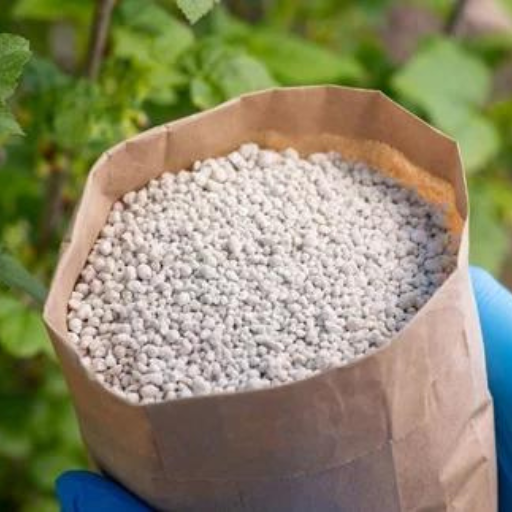
The Function of Nitrogen in Plant Growth
Nitrogen is a fundamental nutrient in the 10-10-10 fertilizer that performs an essential function in growth and development of plants. It is one of the main constituents of chlorophyll, the substance that does photosynthesis through which energy from sunlight is converted into plant food. Moreover, nitrogen constitutes part of amino acids which are proteins’ constituents necessary for diverse growth processes within a plant. Additionally, it encourages leafy green foliage by promoting healthy leaf and stem development. The right levels of nitrogen are critical for improving the overall health and productivity of shrubs and roses during the growing season.
The Significance of Phosphorus to Root Development
Phosphorus is an important element required by plants mainly for strong root growth. It plays a central role during formation of Adenosine Triphosphate (ATP), which is referred as energy currency in cells to fuel various biochemical activities within the plant system. Optimal phosphorous conditions encourage thick extensive roots systems that help plants uptake water and nutrients more efficiently form soil. Further more phosphorous is crucial to DNA or RNA synthesis promoting cell division and elongation. In this case therefore adequate phosphorous ensures not only proper root formation but also increased flowering and fruiting, thus guaranteeing robustness and vigour among such species as shrubs anroses.
Promotion Of Plant Health By Potassium
Potassium is a vital nutrient that greatly improves overall healthiness as well as resilience amongst all plants. It helps regulate different physiological processes including water absorption/retention thus helping maintain turgidity which prevents wilting. Potassium activates enzymes involved in photosynthesis and protein synthesis hence controlling efficient utilization of energy within plant tissue. Another important role played by potassium lies in helping to strengthen cell walls and hence toughens up plants against diseases, pests as well as environmental stressors such as drought and extreme temperatures. Therefore by having adequate amounts of potassium in shrubs and roses consequently leads to stronger stems, better flower quality, disease resistance and therefore lushness or vibrancy.
Is Organic 10-10-10 Fertilizer Suitable for All Plants?
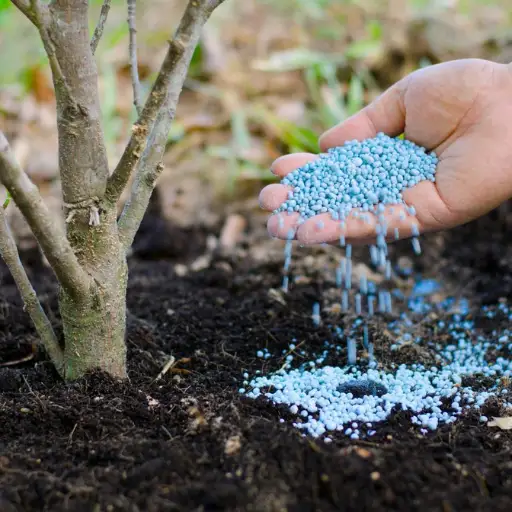
Guidelines for Proper Application of Organic Fertilizer
Applying organic fertilizer effectively requires adhering to certain best practices to ensure optimal plant health and growth. First, it is critical that the soil be tested before applying it in order to determine nutrient deficiencies and prevent over-fertilization. Apply the fertilizer according to the specific needs of each plant, considering factors like the plant’s growth stage, type, and existing soil conditions.
Incorporate the fertilizer into the soil, especially for granulated forms so as to enhance uptake of nutrients and minimize leaching. In case of liquid organic fertilizers use dilution instructions properly and apply them at cooler parts of the day that will reduce loss through evaporation and increase absorption by plants. Monitor crop condition constantly and vary rates depending on season’s progress.
Finally, adding other types of fertilizers like compost can also improve soil fertility hence bettering soil structure leading to healthier plants with more resistance against diseases
When Should You Use Liquid Versus Granular Forms Of Fertilizers?
Liquid Fertilizers:
- Quick Action: These fertilizers are quickly taken up by plants so they are suitable when fast delivery of nutrients is needed especially during growing season.
- Ease Of Use: They are simple to mix with water then sprayed or poured evenly across your garden or lawn.
- Accuracy: This makes liquid manures useful as targeted feeding a procedure which is very important in pot or containerized plants as well as foliar applications.
Granular Fertilizers:
- Sustained Effects: Granules release their contents slowly thus ensuring a continuous nutrient supply throughout the growth period.
- Affordability: It is easier storing granules; they can be used directly without application complications because they wear out gradually hence suitable for extensive gardens.
- Soil Enhancement: Soil structure can be improved using these types of fertilizers which promote good microbes’ activity within soils thereby increasing yields.
In brief, use liquid fertilizers for faster nutrient absorption and spot-on applications, or granular ones for continuous nutrient supply and better soil condition.
Using Organic 10-10-10 All-Purpose Fertilizer
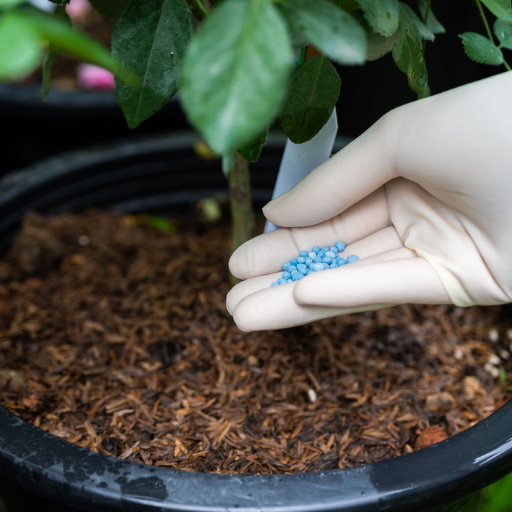
How Often Should I Fertilize My Garden?
I recommend fertilizing my garden every 4-6 weeks during the growing season. This interval ensures that plants receive a consistent supply of nutrients without the risk of over-fertilization. It’s important to monitor my plants and adjust the frequency based on their specific needs and growth conditions. For instance, vegetables and flowering plants may require more frequent feeding, while established trees and shrubs might benefit from a less frequent schedule. Always follow the instructions on the fertilizer label to avoid under or over-fertilization.
Can 10-10-10 Fertilizer Harm My Plants?
While 10-10-10 fertilizer is generally safe and beneficial for a wide range of plants when used correctly, it can potentially harm plants if not applied properly. Over-fertilization can lead to nutrient burn, which manifests as browning or yellowing of leaves and can stifle plant growth. It’s crucial to follow the instructions on the fertilizer label and to be mindful of the specific needs of my plants, including their growth stage and soil conditions. By using the recommended amounts and avoiding excessive applications, I can ensure my plants thrive without the risk of harm.
What Precautions Should I Take When Using Fertilizer?
When using fertilizer, I should always wear protective gear such as gloves and a mask to avoid direct contact with chemicals and inhalation of any dust or particles. It’s important to apply the fertilizer according to the manufacturer’s instructions, being careful not to exceed the recommended amounts. I should also water my plants thoroughly after fertilization to help distribute the nutrients evenly and prevent any potential root burn. Additionally, I need to store the fertilizer in a cool, dry place, out of reach of children and pets, to ensure safety and maintain its effectiveness. Properly cleaning any equipment used for fertilizer application is crucial to prevent contamination and accidental exposure.
Frequently Asked Questions (FAQs)
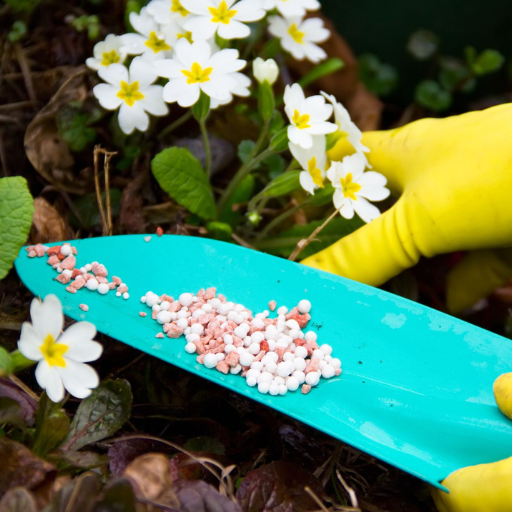
Q: Can this fertilizer be employed in flower gardens?
A: Yes, absolutely! For flower gardens, there is no better fertilizer than Premium Organic 10-10-10 Fertilizer. It enhances healthy flowers and strong plant development.
Q: Are there any reviews given by customers?
A: Yes, many customers have reviewed Premium Organic 10-10-10 Fertilizer on amazon.com among other platforms. Basically, they emphasize how well it works and how easy it is to use.
Q: Is this a concentrated fertilizer?
A: This product has granular and concentrate liquid forms; hence, you can apply either one of them as fertilizers. The concentrated formula can be mixed with water and used as a liquid plant feed.
Q: What area does this fertilizer cover?
A: Depending on the package size, different sq ft areas can be covered by Premium Organic 10-10-10 Fertilizer. For example, just one gallon of standard concentrate could provide enough for several thousand square feet.
Q: Which are the plants that benefit from Premium Organic 10-10-10 Fertilizer?
A: With regard to this matter, Premium Organic 10-10-10 Fertilizer works well on many types of plants such as lawns’ gardens’, fruit trees’ or even houseplants’. All in all, it enhances the growth and health of a plant.
Q: How often should I apply 10-10-10 fertilizer?
A: In order to get good results from using the product each time during growing seasons make sure that you add 6 – 8 weeks intervals when applying your fertilizers. Always follow specific instructions labeled on the product for optimal use.






